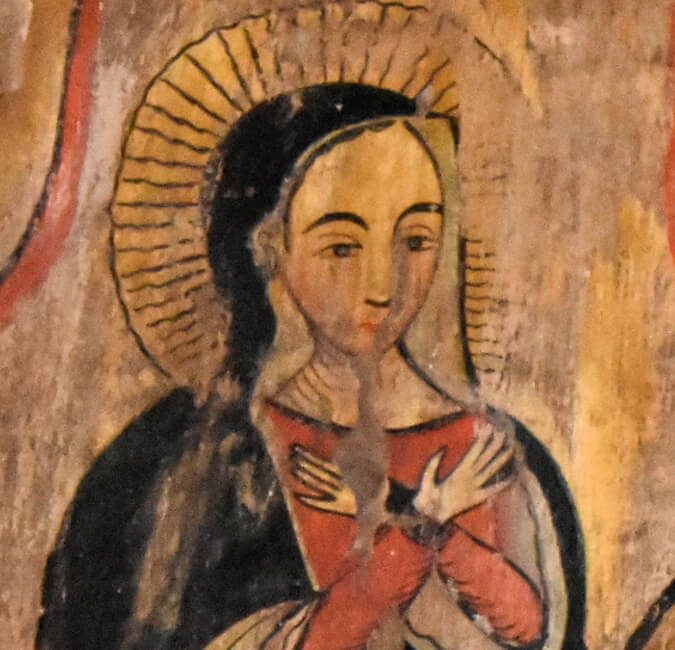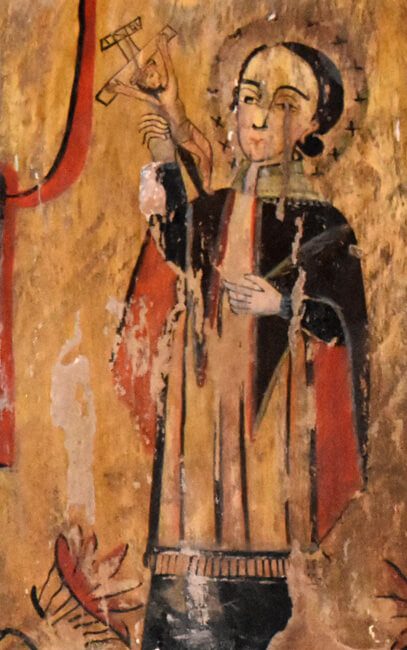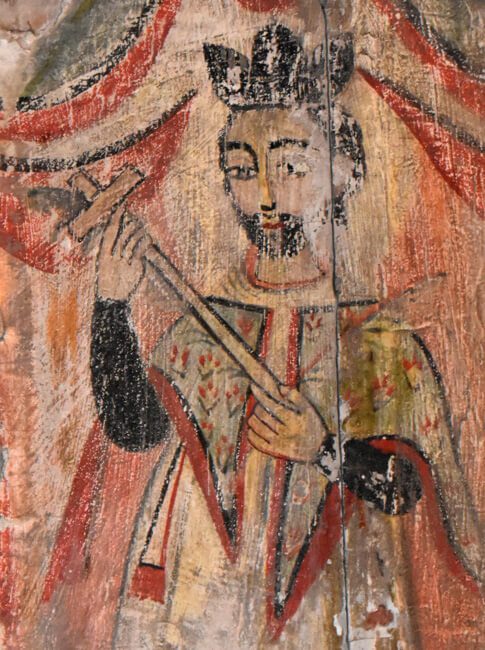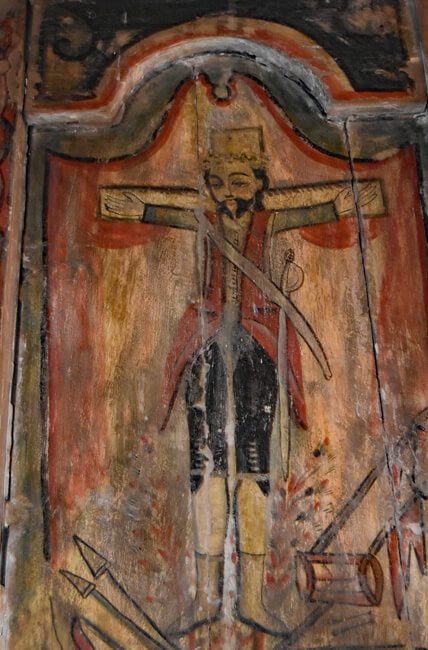Gustavo Victor Goler and a team of master santeros conserve the 1830s devotional works of José Rafael Aragón at the San Antonio de Padua church in the New Mexico village of Cordova.
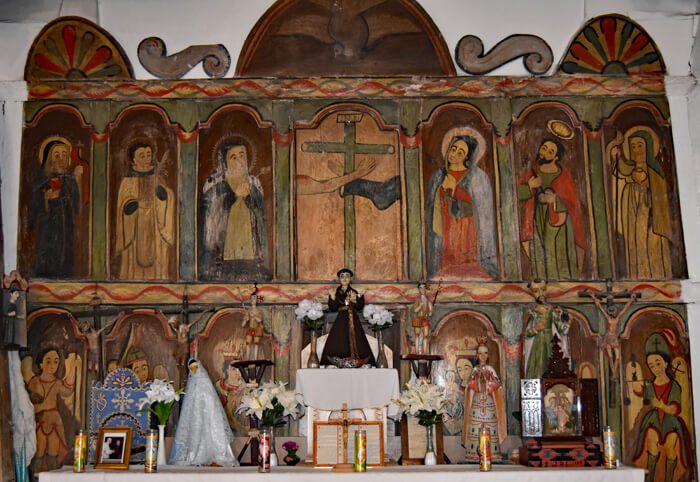
ALBUQUERQUE, NM—It may not be an exaggeration to say that Gustavo Victor Goler, a master santero (a person who makes Spanish-style religious images), is one-of-a-kind in the state.
“There are other conservators and of course there are other historians, and there are definitely other santeros,” says Goler, “but I’m one of the few conservators that specialize [in New Mexico devotional art].”
Goler has worked as an art conservationist for the past thirty-five years, a trade he learned from his uncle starting at age eleven. With his background in art history, Goler, an award-winning artist, is an authority on New Mexico devotional arts.
“It is fair to say, that through his dedication and commitment, Mr. Goler has become the Michelangelo of New Mexico’s Spanish Colonial traditions,” said James M. Long, the former chairman of the board of the Spanish Colonial Society, while bestowing Goler with a Master’s Award for Lifetime Achievement in 2016.
The Taos-based artist is currently leading the restoration of historical artworks inside of the San Antonio de Padua church in the village of Cordova, New Mexico. The endeavor is led by Nuevo Mexico Profundo, a multi-organizational collaboration founded in 2018 that specializes in maintaining and restoring the state’s historic churches. The project will restore twenty-two images of saints and various altar screens, a majority created by the hand of popular 19th-century santero José Rafael Aragón in the 1830s.
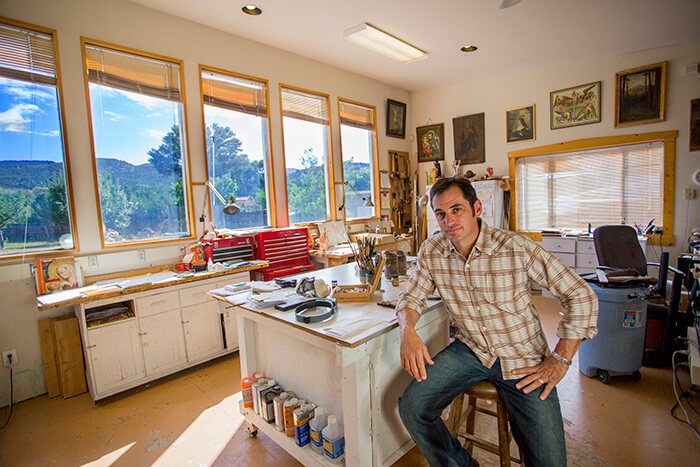
“I have studied contemporary artists and follow the rhythm of changes and the different directions that people are taking, so it all kind of comes together with the conservation and restoration,” Goler explains. “I have a very intimate sort of look at the pieces from chemical and construction backgrounds. I’ve been fortunate to handle a lot of New Mexico devotional art—I’m one of the few conservators that really specialize in that particular thing.”
The conservation of the artwork inside of San Antonio de Padua Church began last month and includes retablos (painted altarpieces) and bultos (carved and painted wooden religious sculptures). The artworks date back to the building’s construction in 1832 in the tiny village of Cordova (population approximately 500 residents) located off the High Road to Taos. Goler and his team are conserving Aragón’s works, which have begun to flake apart.
“The materials we’re dealing with are traditional natural materials that had to be all built by hand back in those days. These are natural pigments that were made from either minerals or plants or even bugs,” says Goler, who adds that the artworks were constructed from basic pine wood as well as a gesso layer made from animal hide glue. “The varnishes that are on the surface now are actually original so they were probably pine or piñón sap diluted with some sort of grain alcohol.”
“Our plan is to consolidate and stabilize the pigment,” a process that consists of applying a protein adhesive made from Russian sturgeon bellies which are cooked down and made into a glue. “It’s very similar to some of the glues that were used by Rafael Aragón although his glues were probably made out of rabbit skin or maybe some sort of other animal hide,” Goler says. From there, the conservationists use syringes to get behind the flaking pigment.
Goler—who’s part of a conservation team that includes master santero Felix Lopez and former San Antonio mayordomo and santero Jerry Sandova—says the work will continue up until Las Posadas, a religious event celebrated in Latin America and parts of the United States from December 14 to December 26.
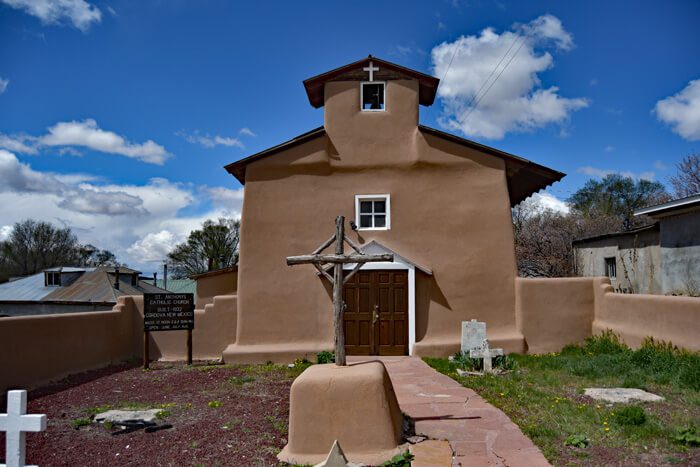
The santero, a 2017 winner of the New Mexico Governor’s Awards for Excellence in the Arts, never saw himself living, working, and making a living in this type of creative economy.
“I didn’t really go out into the world thinking that I’m going to be a saint maker. I never really even wanted to be an artist because I grew up with a lot of artists through the conservation studios of my uncle’s antiquities and it always seemed like a rough career,” says Goler. “I’m fortunate that I do this type of work because it really encompasses a lot of my different interests. I was brought up Catholic, so there’s definitely a spiritual and devotional side to all of it.
“I’m constantly surrounded by saints in my studio,” he says. “People jokingly call my studio the Santo Hospital. In some ways, I believe that they like being here.”
